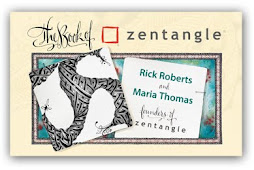Molly writes;
In the famous play, Romeo and Juliet, by William Shakespeare, Juliet speaks to Romeo,
“What's in a name? that which we call a rose
By any other name would smell as sweet.”
I love this phrase. It makes me ponder many things. I think about what a beautiful thing it is that people and many animals alike have developed sophisticated ways to communicate. I think about the complexity of both the spoken and written word. I think about how practically everything has a word or a name that labels it or describes it. And then how different words are used in different languages, cultures, or geographic locations to describe the same thing. And to think about this system again ... does that "thing" change at all without that label or word to identify it? Do we see it differently? Does a different word change or alter its existence? We use words to inform, identify, educate and communicate, but as Juliet says, "What's in a name?"
For instance, here is a word that is frequently used and has very important meaning in so many places across the globe. In English we call it love, but in other languages you will see it as basque, voljeti, обичам, estimar, voljeti, láska, elsker, liefde, armastus, rakkaus, amour, amar, liebe, αγαπώ, szerelem, elska, is breá, amare, mīlestība, meilė, сакам, imħabba, elsker, люблю, љубав, láska, ljubezen, amor, älskar, любов, caru, ליבע, 爱, and 愛. And this is only to name a few. Each word identifies the same thing but the word itself that is used is different in each language.
Another example is when I was a little girl, my mother would make this casserole made with layers of ground beef, corn and green beans and topped with mashed potatoes. It was called
Pâté Chinois. I thought our family invented it. Years later I was at school and on the menu was this thing called Shepard's Pie. When I saw what it was, I thought, that is not Shepard's Pie! That is
Pâté Chinois! Did they steal our family recipe and change the name? How dare they? So it turns out my family did not invent this recipe, they didn't even name it. It is a very old recipe. With more than a handful of names and variations. Does what it is called change the way it is made or alter the flavor? Perhaps in our heads a little ... but not really.
What does this all have to do with the Zentangle method? Well I think about the vocabulary of Zentangle. How we have such fun words to reference techniques and terms and we have names for all these amazing patterns we call tangles. This language is so helpful to identify, communicate and learn the Zentangle Method. We use language to teach this method. And we love to use it, but can we learn it and use it without any language at all? YES! We totally can! That is what is so amazing about this method. It can be beautifully understood, practiced and shared without a single word ... written or spoken. It crosses cultures, continents, religions, and generations. Zentangle art becomes a language in itself.
We put names on tangles and their step-outs so that we can identify them and learn how to create them. It does not mean that we invented the pattern or that we were the only one to ever discover it or create a step-out for it. Are their some tangles that are perhaps original patterns? ... maybe? but many of our tangles are beautiful patterns rediscovered from history and nature. We just come up with a way to draw them and identify them. So is it possible for one tangle to have more than one name? Sure it is. Is it possible that the same tangle has multiple step-outs? Of course. Can there be multiple variations of the same tangle? Yes again.
So...
“What's in a name? that which we call crescent moon
By any other name would still be the same beautiful tangle”
Tangle on my friends.
-----+-----
The winners from our last blog are:
1. a free year's subscription to Zentangle Mosaic: Mary (Biology professor)
Please email julie [at] zentangle [dot] com
2. Anything is Possible One Stroke at a Time Print: Linda JF
Please email your shipping information to maria [at] zentangle [dot] com












